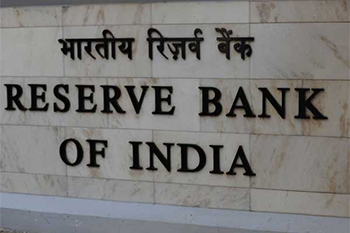
The RBI Financial Stability Report (FSR) has identified some key macro risks to the Indian economy and the markets. These macro risks arise from the global economic situation, the domestic situation and the structure of the market and the banking system. But, what exactly is this RBI FSR?
The Financial Stability Report (FSR) is published by the RBI twice a year and is more current compared to the Report on Trends and Progress in Banking. The latter tends to become outdated by the time the report is published. That is why the FSR assumes a lot more importance in the Indian macro context. Here are some key risks identified by the FSR.
Global macro risks abound
In calendar year 2021, there is likely to be a positive turnaround across global economies . The advanced economies are likely to see growth revive to 5.2% in 2021 but that will taper to 4.5% in 2022 and further to 2.2% in 2023. In the case of emerging markets, growth is likely to taper from 6.4% in 2021 to 5.1% in 2022 and further to 4.6% in 2023.
The big risk is that once the base effect of the COVID year is overcome, the growth rates are likely to settle at or below its 10-year median growth rates. For India, the big risk will come from sticky fiscal deficit, which is expected to be as high as 7.8% even in year 2026 as per the IMF fiscal monitor.
Transition out of LIBOR
With the London Interbank Offer Rate (LIBOR) likely to be scrapped, Indian has announced the move towards an alternate reference rate (ARR). There are trillions of dollars riding on the LIBOR, so there will be the need for new benchmarks and hedging instruments with sufficient liquidity. This is a big risk for India’s forex borrowings, largely LIBOR-marked.
Commodity risks emanating from oil
Oil still remains the X-factor for the year 2022 and beyond. Some of the statistics are quite revealing. For example, in November, US reported 6.2% retail inflation but energy inflation was 30%. For the developed countries (OECD), total inflation stood at 5.2% of which energy inflation was 24.2%. Clearly, the steep spike in the cost of all forms of fossil fuels including oil and coal are currently posing the biggest commodity risk.
Cryptocurrency risks
The world is waking up to the imminent need to regulate cryptocurrencies in a systematic manner. Private cryptocurrencies pose a risk to the anti-money laundering efforts of various government, including India. These cryptos are also prone to frauds and are highly speculative in nature.
However, the use of cryptocurrencies is rampant and the best governments can do to address this risk is to devise a proper regulatory framework. Cryptos overall have a market cap in excess of $2.8 trillion and are a force to reckon with. They poses a major threat to the ability of central banks to influence the monetary system.
Financing the government deficit
Financing the fiscal deficit will be a big challenge because there is a huge debt repayment coming up. Between 2021 and 2027, total repayment obligations of the centre will surge from Rs.250,000 crore to Rs.610,000 crore. That explains why the fiscal deficit is likely to remain elevated at around 7.8% even in year 2026.
One more problem that India faces is that the revenue deficit as a share of fiscal deficit is now consistently at around 70%. That means a lot of the borrowings are happening just to meet the revenue expenditures of the government. That is hardly a good justification for government debt.
Bank Wholesale credit
In Dec-21, banking credit growth stood at 7.1% against 5.4% last year. However, overall share can be quite misleading unless you look at the components. Out of the incremental credit growth in FY20-21, 64% incremental growth in bank credit came from personal loans and home loans. Trade and agriculture witnessed robust growth in credit too.
However, industry credit contracted -22%. The private sector is preferring NCDs over bank credit. This remains a risk, considering there is a strong correlation between industrial credit growth and GDP growth. The low interest rates also saw a rush of corporates locking themselves in low cost credit via NCDs.
Growth in consumer credit
This is the one segment that has shown good traction in the last 2 years but there is an area of concern here too. The sub-prime enquiries have been growing sharply in recent months. On yoy basis, the growth in credit active customers moderated at the same time. Many of these borrowers have borrowed under the personal loans category; typically from Fintech lenders. As per the latest data from CIBIL, nearly 52% of credit-active customers today are sub-prime with NBFCs and PSBs having a much bigger share of sub-prime borrowers.
To sum it up, India faces the risk of rising sovereign debt and sticky fiscal deficit. The lead indicators of industrial growth like credit growth is currently missing. Also, the surge in sub-prime borrowers post a structural risk to lenders. That remains the big challenge in 2022.
Related Tags

![]() IIFL Customer Care Number
IIFL Customer Care Number
(Gold/NCD/NBFC/Insurance/NPS)
1860-267-3000 / 7039-050-000
![]() IIFL Securities Support WhatsApp Number
IIFL Securities Support WhatsApp Number
+91 9892691696
www.indiainfoline.com is part of the IIFL Group, a leading financial services player and a diversified NBFC. The site provides comprehensive and real time information on Indian corporates, sectors, financial markets and economy. On the site we feature industry and political leaders, entrepreneurs, and trend setters. The research, personal finance and market tutorial sections are widely followed by students, academia, corporates and investors among others.
Stock Broker SEBI Regn. No: INZ000164132, PMS SEBI Regn. No: INP000002213,IA SEBI Regn. No: INA000000623, SEBI RA Regn. No: INH000000248

This Certificate Demonstrates That IIFL As An Organization Has Defined And Put In Place Best-Practice Information Security Processes.